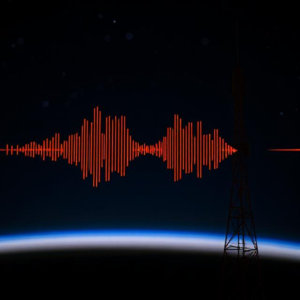Modulation in wireless communication is like sending a message by changing a signal in a way that makes it easier for the message to travel over the air. Let me break it down simply:
What is Modulation?
When you want to send information (like voice, text, or video) over the air (or through any medium), the information is usually in the form of data. However, data can’t directly travel over long distances in its raw form. We need to convert or “modulate” it into a signal that can travel efficiently. Modulation is the process of changing a carrier signal (a steady wave) to carry the information.

Why Modulate?
There are a few reasons why we need modulation:
- Efficiency: A low-frequency signal (like sound or data) might not travel far or may be too weak. By modulating it onto a higher frequency (radio wave), the signal can travel longer distances.
- Sharing the Airwaves: Modulation helps us to send many different signals over the same frequency range without interfering with each other.
- Signal Quality: Modulation allows the signal to be more robust, meaning it’s less likely to get lost or corrupted due to noise or obstacles in the environment.
How Does Modulation Work?
Imagine a basic wave (the carrier signal) like a smooth, continuous ocean wave. Now, to send information, you change this wave in certain ways. This is what modulation does:
- Amplitude Modulation (AM): You change the height of the wave (its amplitude) according to the information you want to send. For example, louder sounds would make higher waves, and softer sounds would make lower waves. This is like how old radios used to transmit signals.
- Frequency Modulation (FM): You change the frequency of the wave (how fast the wave oscillates). In FM, the pitch of the wave changes to carry the information. Higher frequency means higher pitch, and lower frequency means lower pitch. This is commonly used in radio stations to broadcast music and news.
- Phase Modulation (PM): Instead of changing the height or frequency, phase modulation changes the position of the wave. It shifts the wave by small amounts to represent data. This is a bit more complex and often used in digital communication systems.
Digital Modulation
When sending data (like internet or text), modulation can be more advanced. For example, in Quadrature Amplitude Modulation (QAM), both the amplitude and phase of the signal are changed in a specific way to send multiple bits of information at the same time.
Real-Life Examples:
- AM and FM radio: AM uses amplitude modulation, and FM uses frequency modulation to transmit signals to your radio.
- Wi-Fi: It uses a form of digital modulation to send internet data efficiently over short distances.
- Cell phones: They use complex modulation techniques to send voice and data over long distances, ensuring fast and reliable communication.
Summary
In simple terms, modulation is a way to adjust a basic signal to carry your information efficiently over the air or through space. It makes sure your message (like a phone call, radio station, or internet data) can travel long distances without interference or loss, allowing modern wireless communication systems to work smoothly.
Tags: amplitude modulation (AM), analog modulation, broadcast radio, carrier signal, cell phone communication, communication reliability, Data transmission, digital communication systems, Digital Modulation, frequency modulation (FM), frequency sharing, internet data, long-distance communication, modern wireless networks., Modulation, modulation techniques, Noise resistance, phase modulation (PM), quadrature amplitude modulation (QAM), Radio Waves, signal efficiency, Signal interference, signal oscillation, Signal Quality, signal robustness, signal transmission, voice communication, wave amplitude, wave frequency, wave phase, Wi-Fi modulation, wireless communication, wireless signal


